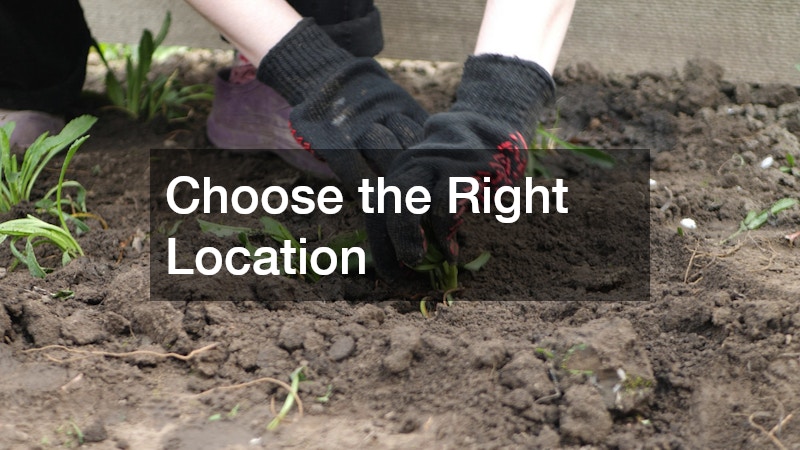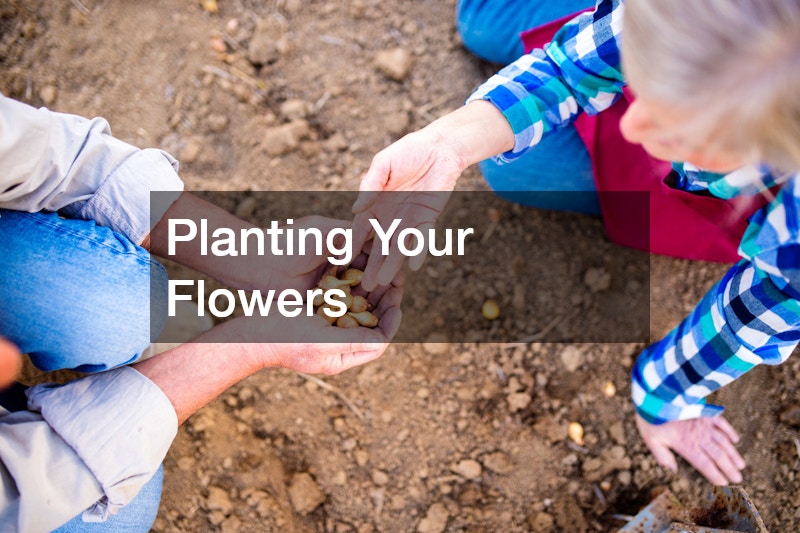Starting a flower garden can be one of the most rewarding home projects. Flowers bring beauty, color, and life to any outdoor space, and gardening itself offers relaxation and joy. If you’ve always admired vibrant flower beds and dreamed of creating your own, you’re in the right place. The good news is you don’t need to be an expert to succeed. With a little planning and care, anyone can grow a thriving garden.
This step-by-step guide will walk you through how to start a flower garden, from choosing the right spot and preparing your soil to selecting flowers and keeping them healthy all season long.
Step 1: Choose the Right Location

The first step in starting your flower garden is picking a location that meets your plants’ needs. Flowers, like all plants, depend on light, water, and soil conditions to thrive.
- Sunlight: Most flowers need at least 6 hours of sunlight each day. Observe your yard to see where the sun shines longest.
- Soil Quality: Avoid areas with compacted or rocky soil. Loose, well-draining soil works best.
- Accessibility: Pick a spot you can reach easily for watering and maintenance.
If you live in a hot climate, consider planting near a tree or structure that provides partial shade in the afternoon. If your space is limited, you can even start with container gardening on a patio or balcony.
Step 2: Plan Your Flower Garden Design
A flower garden thrives not only on healthy plants but also on thoughtful design. Taking the time to plan your garden before planting makes a big difference in how it looks and how easy it is to maintain. Think about the overall style you want—whether that’s a formal, symmetrical garden or a more natural, cottage-style layout.
Shape & Size
- Decide how much space you want to dedicate to flowers. A small border garden along a walkway can create a welcoming entrance, while a large round flower bed or multiple plots in different corners of your yard can make a bigger impact.
- Consider how much time you’ll have for maintenance. A smaller garden requires less weeding, watering, and upkeep, while a larger design will need more attention.
Height Arrangement
- To keep your garden looking balanced, place taller flowers or plants with large stalks (like sunflowers or hollyhocks) at the back or in the center of circular beds.
- Medium-height plants can be layered in the middle, while shorter flowers, like pansies or marigolds, go at the front edge.
- This arrangement ensures every flower can be seen without being hidden behind taller plants.
Color Scheme
- Flowers come in nearly every color, so think about how you want the garden to feel. Complementary colors, such as purple and yellow, create striking contrasts.
- For a calming and elegant look, stick to one color family—such as shades of pinks, purples, or whites.
- You can also plan for seasonal color changes, like warm tones in summer and cooler tones in fall.
Seasonal Variety
- A great flower garden doesn’t bloom all at once and then fade away. Choose a mix of plants that flower in spring, summer, and fall to keep your garden vibrant most of the year.
- For example, daffodils bloom in early spring, roses shine in summer, and chrysanthemums brighten up the fall season.
Practical Tips
- Sketching your layout on paper—or using a simple garden planner app—can help you visualize the final look before you buy plants.
- Think about pathways or stepping stones if you want easy access for watering, pruning, or simply enjoying your flowers up close.
- Consider how your garden design will look from inside your home too. Position flowers where they’ll be visible from windows for extra enjoyment.
By planning your garden design carefully, you’ll create a space that looks beautiful, feels balanced, and provides lasting color throughout the seasons.
Step 3: Prepare the Soil
Healthy soil is the foundation of every successful flower garden. Poor soil can prevent flowers from growing, even if they get enough sunlight and water.
Steps to prepare your soil:
- Remove Weeds & Grass – Clear the area of weeds, sod, and debris.
- Loosen the Soil – Use a garden fork or tiller to break up compacted dirt.
- Add Organic Matter – Mix in compost, peat moss, or aged manure to improve nutrients and drainage.
- Test Soil pH – Flowers typically thrive in slightly acidic to neutral soil (pH 6–7). You can buy an inexpensive test kit to check this.
If your soil is very poor, consider building a raised flower bed filled with fresh garden soil.
Step 4: Choose the Right Flowers
Choosing the right flowers is one of the most exciting steps in starting your garden, but it’s also where good planning really pays off. The flowers you select should fit your local climate, soil type, and the amount of sunlight in your chosen garden spot. This ensures they thrive with less effort and keep your garden looking its best.
Perennials vs. Annuals
- Perennials – These are plants that return year after year. Once established, they often require less maintenance and can form the backbone of your garden. Popular examples include tulips, daisies, lavender, and hostas. They might not bloom as long as annuals, but they provide reliability and structure to your space.
- Annuals – These plants bloom for just one season but usually produce vibrant, showy flowers that make an instant impact. Favorites include marigolds, petunias, and zinnias. While they need to be replanted each year, they’re excellent for filling in gaps and adding bursts of color.
Easy Flowers for Beginners
If you’re new to gardening, starting with easy-to-grow flowers will boost your confidence and give you quick results:
- Sunflowers – Bright, tall, and cheerful, sunflowers grow quickly and are very hardy.
- Marigolds – These thrive in many conditions, repel some pests, and bring vibrant orange and yellow tones.
- Zinnias – Long-blooming and colorful, zinnias love sunny spots and are low-maintenance.
- Black-eyed Susans – Hardy perennials with bold yellow petals that return year after year.
- Daffodils – Early-spring bloomers that are tough and dependable.
- Coneflowers – Drought-tolerant and pollinator-friendly, making them a great eco-conscious choice.
Mixing Annuals & Perennials
For the best results, combine both types in your garden. Perennials will give you lasting structure, while annuals add splashes of seasonal variety. This mix also ensures your garden looks lively from early spring to late fall. You might use perennials for the background and plant colorful annuals around the edges or in empty spaces.
Tips for Smart Flower Selection
- Consider bloom times so you have flowers opening at different points in the season.
- Pay attention to light needs (full sun, partial shade, or full shade).
- Think about maintenance levels—if you’re a beginner, stick to low-maintenance flowers that can tolerate less-than-perfect conditions.
- Choose flowers that attract pollinators like bees and butterflies, which help keep your garden healthy and thriving.
By selecting flowers thoughtfully, you’ll create a garden that is not only beautiful but also manageable and rewarding throughout the year.
Step 5: Planting Your Flowers

Now comes the fun part—putting your flowers into the ground.
Tips for planting:
- Follow Instructions: Each flower has specific planting depths and spacing needs listed on the seed packet or plant tag.
- Dig Proper Holes: Make sure the hole is wide enough for roots to spread.
- Water as You Plant: Gently water the soil after placing each plant to help roots settle.
- Mulch the Surface: Adding a layer of mulch helps keep soil moist and reduces weed growth.
Planting in the early morning or late afternoon is best since the sun is less harsh.
Step 6: Watering & Fertilizing
Flowers need the right amount of water and nutrients to grow strong and healthy.
- Watering: Most flowers do best with about 1 inch of water per week. Deep watering (soaking the soil) is better than frequent light watering.
- Fertilizing: Use a balanced fertilizer or one designed for flowers. Apply according to package instructions to avoid overfeeding.
- Mulching: Mulch helps conserve moisture, regulate soil temperature, and prevent weeds.
Be consistent with watering, especially in hot or dry weather.
Step 7: Maintain & Care for Your Garden
Starting a flower garden is just the beginning—keeping it healthy requires ongoing care.
Key maintenance tasks:
- Weeding: Remove weeds regularly so they don’t steal nutrients.
- Deadheading: Trim spent blooms to encourage new flowers.
- Pruning: Cut back overgrown plants to maintain shape.
- Pest Control: Watch for signs of insects or disease. Use natural remedies like neem oil when possible.
Regular maintenance not only keeps your garden beautiful but also extends the life of your plants.
Step 8: Attract Pollinators
Pollinators like bees, butterflies, and hummingbirds help flowers thrive. To make your garden pollinator-friendly:
- Plant native flowers.
- Choose nectar-rich varieties like coneflowers or bee balm.
- Avoid pesticides that harm pollinators.
- Provide a shallow water source, like a small birdbath.
A pollinator-friendly garden will reward you with healthier plants and more vibrant blooms.
Step 9: Common Mistakes to Avoid
Even beginners can create a beautiful garden if they avoid some common mistakes:
- Planting in the wrong location (too much or too little sun).
- Overwatering or underwatering.
- Ignoring soil preparation.
- Planting flowers too close together.
- Skipping regular maintenance like weeding or pruning.
Learning from these mistakes early will save you time and frustration.
Step 10: Enjoy Your Flower Garden
Once your flowers start blooming, take time to enjoy the results of your effort. Your garden can be a place of relaxation, creativity, and even a way to bring family and friends together. You can cut flowers for indoor arrangements, host outdoor gatherings, or simply spend quiet mornings surrounded by nature.
Conclusion
Starting a flower garden is an achievable and enjoyable project for anyone willing to put in a little effort. By choosing the right location, preparing the soil, selecting suitable flowers, and caring for them properly, you’ll be rewarded with a colorful and thriving garden. Whether you’re planting in your backyard or a few pots on your balcony, knowing how to start a flower garden gives you the tools to bring beauty and life into your home.
With patience and regular care, your flower garden will bloom season after season, creating a space you’ll be proud of.


